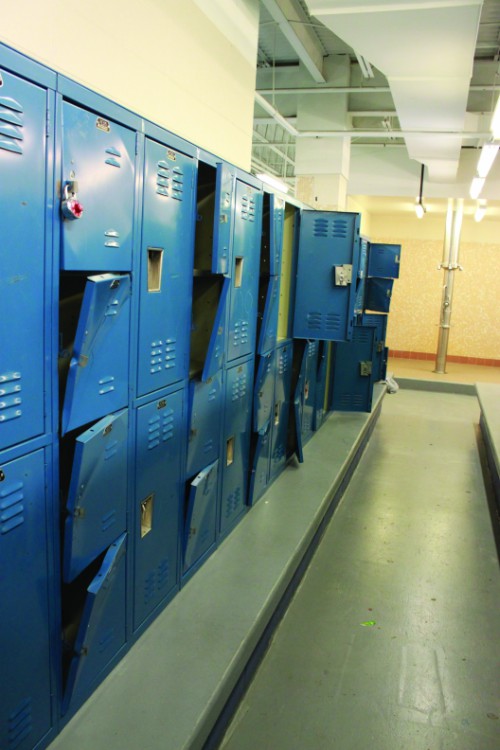Money Matters: The problem with school spending
For most people, millions of dollars means limitless possibility. But for the school, it means football and not much else. The school needs to be spending their money equitably and not based on popularity.
The school district spent about $2.4 million on the stadium over the summer, according to the Daily Herald. But for people not involved with football, it seems like another monetary sleight.
“Three years ago, we started talking about improvements to our outdoor facilities,” Kent Nightlinger, principal, said. “Next year, we want to add two more tennis courts and improve the rest.”
The courts have seen better days. Numerous cracks in the courts, rusting net posts, and fencing that is digging itself out of the ground.
Inside the school, there is even more that needs fixing: the boys’ locker room is in horrible condition, the small auditorium is heavily outdated, and the walls upstairs are so thin that the whole wing becomes an ice box when the heat isn’t running. All these facilities have been in terrible condition for a very long time, yet the first thing the school fixes is the stadium.
“The District hired a new architectural firm, which have identified areas in the building that need improvements,” Nightlinger said. “We only receive a certain amount of money, so we have to prioritize [what we renovate].”
The problem is not a lack of money. According to Nightlinger, the school receives about $1 million a year to spend. That should be more than enough. The problem is the school’s unbalanced priorities. They should have used some of the millions they spent on the stadium to help other facilities that need the improvements more.
Not only do some facilities get priority over others, but the same happens to clubs as well. Some clubs get everything they need, while others do not get enough money to even run their program without external support. For example, Robotics Club only gets about one-third of what they need and have to look for sponsors to help pick up the slack, according to John Keyzer, Robotics Club sponsor.
“What we get from the school helps, but it does not cover all of our expenses,” Keyzer said. “With our competition fees and various parts we have to buy, we need around $15,000-$20,000 per year, [while the school only] gives us $5,000.”
The school needs to be more aware of current club needs and fairly distribute their funding accordingly. The school’s clubs are making due with what they have, but they should not have to go out and get sponsors like Robotics Club.
“We try to look at how we can get the best bang for our buck,” Anne Harrigan, Bear Boosters president, said. “We look at how big the group is, how often they come for money, and when the last time we gave them money was.”
Bear Boosters should not have to pick up the slack when it comes to funding. The school should be looking at how much each club needs, not how much the club wants or how popular they are. The school must realize the way they fund the clubs is not equitable. Club’s should not have to rely on outside help, each club should be given at least as much as they need, taking money from some clubs and giving to others as necessary.
Every club wants as much money as they can get, but it is not fair to give everything to some clubs and not to others. It also is not fair to leave so many places in the building rotting away while spending millions on the stadium. The school gives football everything they need to run their program, according to David Proffitt, head football coach, but the school should not have to leave other clubs or places starving for more funding to do that.

The Incredible Jim has been in the journalism program for 4 years and is in his second year on staff. Jim plays guitar and plays for the varsity tennis...

